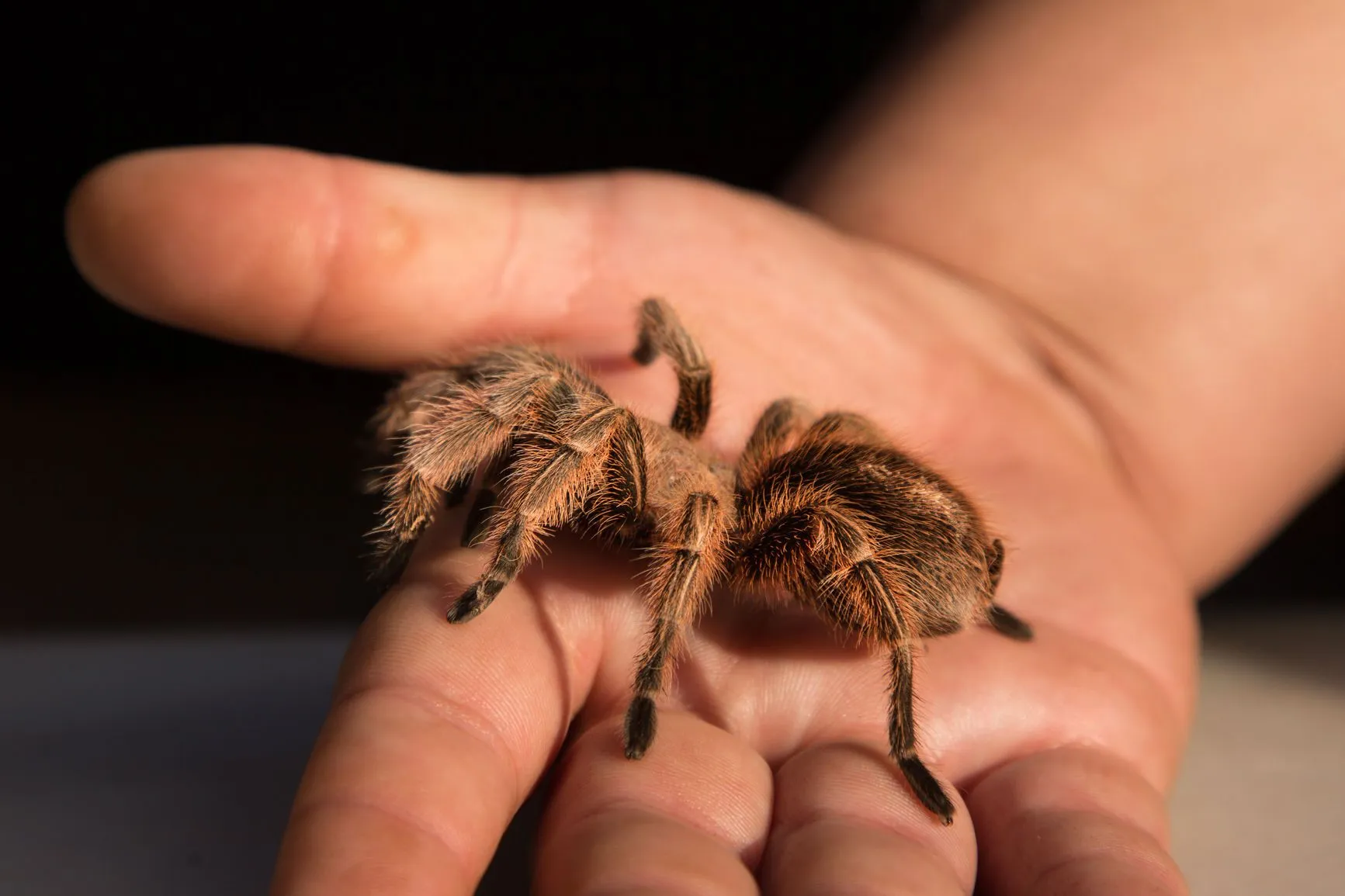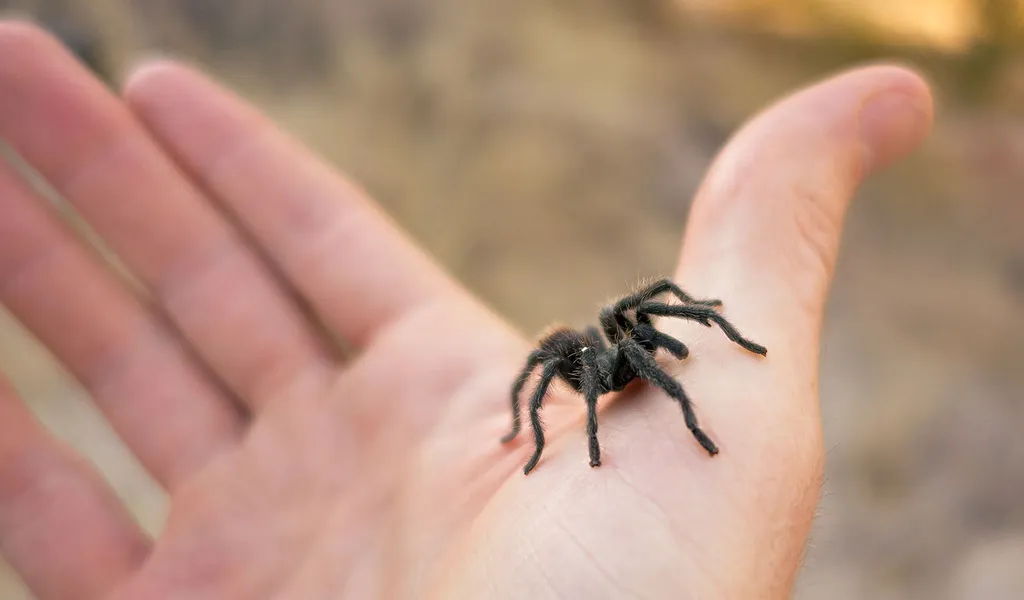What are Tarantulas?
Tarantulas are large, hairy spiders belonging to the Theraphosidae family. They are among the biggest spiders in the world, known for their impressive size, diverse colors, and relatively docile nature, which makes them a popular choice for pet owners. Found in various habitats around the globe, from tropical rainforests to deserts, these fascinating creatures have captured the interest of both scientists and pet enthusiasts. Their long lifespans, unique behaviors, and the ease of care, compared to some other exotic pets, contribute to their popularity. Understanding the basic facts about tarantulas is the first step toward appreciating these amazing arachnids and ensuring their well-being if you plan to keep one as a pet. Furthermore, learning about tarantulas helps to dispel common myths and misconceptions surrounding these fascinating creatures.
Characteristics of Tarantulas
Tarantulas exhibit several distinctive characteristics that set them apart from other spiders. These features are key to their survival and adaptation to diverse environments. From their physical attributes to their behaviors, each characteristic plays a crucial role in their ability to thrive. Their exoskeletons, molting process, and venom delivery systems are all fascinating aspects of their biology. Moreover, understanding these characteristics is essential for providing proper care, whether you are a beginner or a seasoned pet owner. Their adaptations to various environments, like their coloration for camouflage, also add to their unique appeal. Observing and learning about these features can greatly enrich your experience of owning a tarantula.
Appearance

Tarantulas come in a wide array of colors and sizes, varying greatly depending on the species. Their bodies are covered in tiny hairs called setae, which give them a furry appearance. These hairs also play a sensory role, helping the tarantula detect vibrations and air movements. The colors range from shades of brown and black to vibrant blues, oranges, and reds, which are often used for camouflage or to attract mates. The pedipalps, located near the mouth, are used for sensing and handling food. Their fangs, while capable of delivering a bite, are generally not dangerous to humans, and the venom is mild. The overall appearance of a tarantula is both captivating and fascinating, making them beautiful pets to observe.
Size and Lifespan
The size of a tarantula varies widely between species. Some smaller species may have a leg span of only a few inches, while larger species can reach over 10 inches. Female tarantulas typically live longer than males, sometimes up to 20-30 years in captivity. Males often mature faster and have shorter lifespans, often dying shortly after mating. Understanding the size and lifespan of the particular species you are considering is vital for setting up the right enclosure and anticipating the level of commitment involved. The lifespan of a tarantula is a significant factor to consider when deciding to own one as a pet, as it represents a long-term responsibility. Furthermore, the size of a tarantula also influences its feeding needs and the overall space required.
Tarantula Care
Proper care is essential for the health and happiness of your tarantula. This includes providing a suitable habitat, regular feeding, and ensuring a safe environment. Their specific needs depend on the species. By following these guidelines, you can provide your tarantula with a comfortable and enriching life. A well-cared-for tarantula can bring years of fascination and enjoyment. Regular observation and attention to their needs are crucial for maintaining their well-being. This section covers essential aspects to ensure your tarantula thrives in its environment, from habitat setup to handling, allowing for responsible pet ownership.
Habitat and Enclosure

Creating the right habitat is crucial for your tarantula’s well-being. The enclosure should be appropriately sized for the species, allowing for adequate space to move around. A secure lid is essential to prevent escapes. The enclosure should be well-ventilated, but not drafty, to maintain humidity levels. The substrate, or bedding, should be appropriate for the species and should be deep enough for burrowing species. Decorations like branches, cork bark, and plants provide enrichment and hiding places. Temperature and humidity levels should be maintained appropriately, using a thermometer and hygrometer. Consider that these needs vary by species; research is essential for each type. A well-designed enclosure provides both safety and enrichment, promoting a healthier and happier tarantula.
Feeding Your Tarantula
Feeding your tarantula is a straightforward process. Tarantulas are primarily insectivores, meaning they eat insects. The diet typically consists of crickets, mealworms, roaches, and other feeder insects. The size of the prey should be appropriate for the size of the tarantula; a good rule is to offer insects no larger than the tarantula’s body. Feed juveniles more frequently than adults. Adults can often be fed once or twice a week. Always remove uneaten prey after 24 hours. Provide a shallow water dish with fresh water at all times. Overfeeding can lead to health issues, while underfeeding can stress the tarantula. Therefore, monitoring your tarantula’s appetite and overall condition helps determine its feeding needs. Nutritional variety can contribute to overall health, so consider different feeder insects.
Handling and Safety
Handling a tarantula should be done with caution and only if the species is known to be docile. Some tarantulas are more prone to defensive behaviors, such as biting or flicking urticating hairs. Always wash your hands before and after handling your tarantula. Avoid handling if the tarantula is about to molt. Handle your tarantula in a safe environment, close to the ground, to prevent injury if it falls. Be aware of the risks, and always respect the animal’s space. For those new to tarantula ownership, it is often best to start with a species known for its calm temperament. The urticating hairs can cause skin irritation and respiratory problems, therefore it is advised to handle tarantulas minimally. Furthermore, observe your tarantula’s behavior, and learn its cues to avoid triggering defensive responses.
Common Tarantula Species for Pets

There are many species of tarantulas that are suitable as pets, each with unique characteristics and care requirements. Some popular choices include the Chilean rose hair tarantula, known for its docile temperament, and the curly hair tarantula, also known for its gentle nature. Others include the Mexican red knee tarantula and the Costa Rican zebra tarantula. Researching different species before making a decision is essential. Consider factors like size, temperament, and care needs when choosing a species. Starting with a species known for its ease of care is recommended, especially for beginners. The selection of a tarantula should always be based on the specific needs and characteristics of the individual species.
Popular Tarantula Choices
The most popular tarantulas for pets are usually those with calm temperaments and relatively easy care requirements. The Chilean rose hair tarantula (Grammostola rosea) is a favorite due to its docile nature and attractive appearance. The curly hair tarantula (Tliltocatl albopilosus) is another well-loved choice. The Mexican red knee tarantula (Brachypelma hamorii) and the Costa Rican zebra tarantula (Aphonopelma seemanni) are also popular due to their vibrant colors and engaging behaviors. Each species has different needs and behaviors. Therefore, research on each of the species is important to determine the best fit for your home. These are just a few examples; many other species make great pets.
Considerations Before Getting a Tarantula
Before getting a tarantula, it’s important to consider several factors to ensure you can provide the right care. Think about your lifestyle and whether you can commit to the long-term care required. Research the specific species you are interested in, as care requirements vary. Consider the space you have available for the enclosure. Additionally, you must assess the costs of setting up and maintaining the habitat, including the cost of food. Check local laws and regulations regarding owning exotic pets. Make sure you are prepared to handle and care for a live animal responsibly. This detailed consideration ensures that you can provide the best possible environment for your new pet. Moreover, it also ensures that the pet’s well-being is prioritized.
Legality and Ethical Concerns

Before acquiring a tarantula, it is crucial to understand the legal and ethical considerations. Research local laws and regulations regarding owning exotic pets, as these can vary significantly. Ensure that the species you are considering is not protected or endangered and that it is legal to own it in your area. Purchase your tarantula from a reputable breeder to ensure it is healthy and ethically sourced. Be aware of any potential welfare concerns related to the tarantula’s origin. Ethical pet ownership is crucial to ensure that the well-being of the animal is prioritized. By being aware of the legal and ethical implications, you contribute to the responsible keeping of tarantulas and help protect them from harm.
Benefits of Owning a Tarantula
Owning a tarantula can be a rewarding experience. They are relatively low-maintenance pets compared to many other animals, requiring less interaction and space. Tarantulas are fascinating to observe, and their unique behaviors can provide hours of enjoyment. They are generally quiet pets. Owning a tarantula can be a great educational opportunity, allowing you to learn about arachnids and their fascinating lives. They also offer a chance to appreciate the diversity of the natural world. For many, the quiet companionship and unique appeal of a tarantula make them delightful pets. The relatively low demands of care allow even busy individuals to enjoy pet ownership. In short, owning a tarantula can be a unique and enriching experience.
